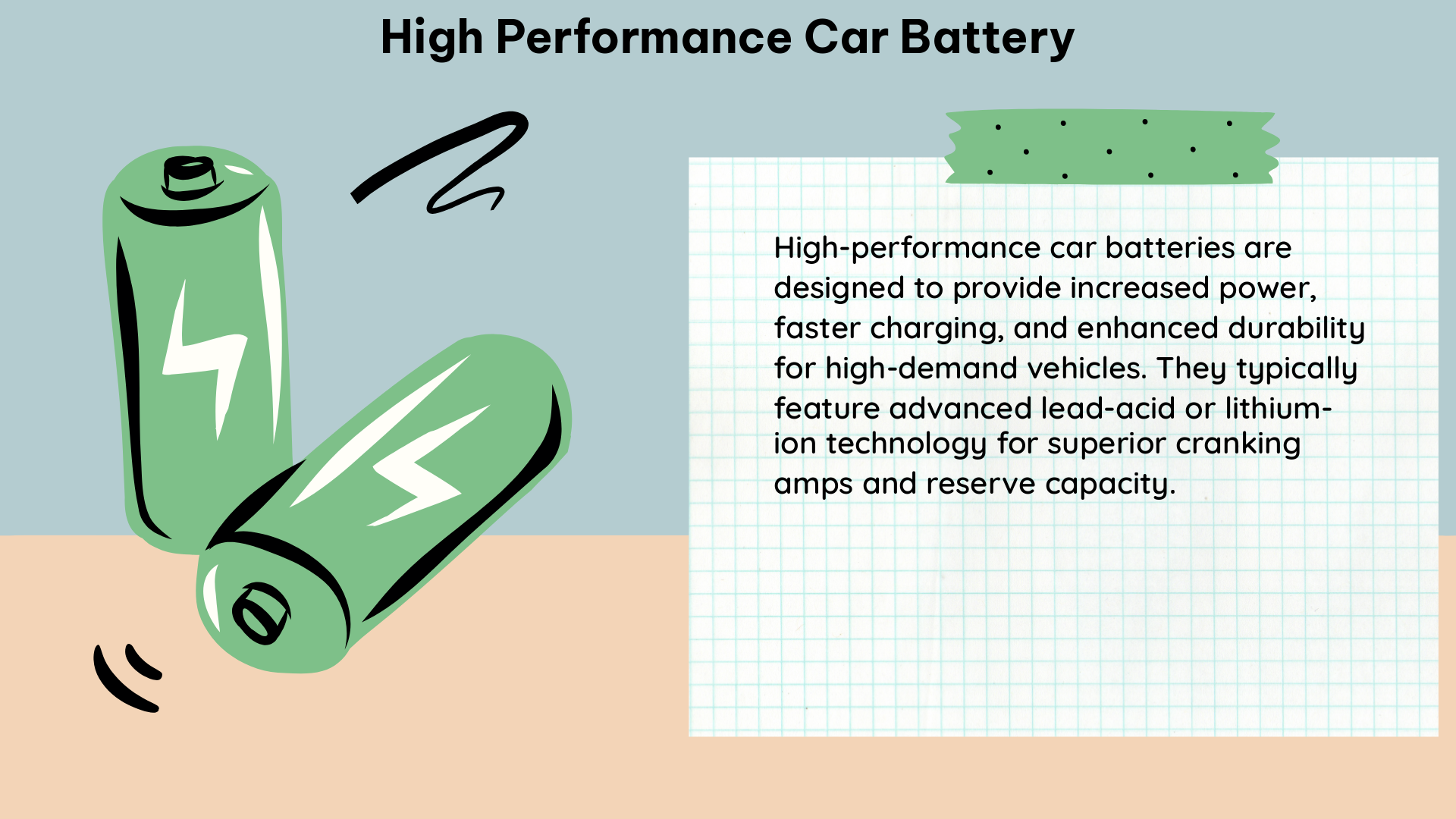High performance car batteries are designed to deliver exceptional power output, efficient energy conversion, and long-lasting durability, making them essential for electric vehicles (EVs) and hybrid electric vehicles (HEVs) to ensure optimal performance, range, and reliability. This comprehensive guide delves into the key metrics and technical specifications that define the performance of high performance car batteries, providing DIY enthusiasts with a detailed playbook for selecting, installing, and maintaining these advanced power sources.
Capacity (Ah): The Backbone of Power
The capacity of a high performance car battery, measured in ampere-hours (Ah), represents the total amount of electrical charge it can deliver over a specific period. This metric is crucial as it directly impacts the power and range capabilities of your EV or HEV. High-capacity batteries, such as the Lithium-ion (Li-ion) batteries used in Tesla’s Model S Long Range, can store up to 100 kWh of energy, enabling a driving range of over 400 miles on a single charge.
Power Density (W/kg): Unleashing Rapid Acceleration

Power density, measured in watts per kilogram (W/kg), is a key indicator of a battery’s ability to rapidly discharge and supply power to the vehicle’s electrical systems. High power density batteries, like the ones found in the Porsche Taycan Turbo S, can deliver up to 1,050 horsepower, enabling lightning-fast acceleration from 0 to 60 mph in just 2.4 seconds.
Energy Density (Wh/kg): Maximizing Range and Efficiency
Energy density, measured in watt-hours per kilogram (Wh/kg), represents the amount of energy a battery can store per unit of weight. Higher energy density batteries, such as the Panasonic NCR18650B cells used in the Tesla Model 3, can store up to 265 Wh/kg, allowing for longer driving ranges without significantly increasing the vehicle’s weight.
Cycle Life: Ensuring Long-Lasting Performance
The cycle life of a high performance car battery is a measure of its durability and longevity, representing the number of charge and discharge cycles it can withstand before its capacity drops below a certain threshold. Advanced battery chemistries, like the lithium-iron-phosphate (LFP) batteries used in the BYD Han EV, can achieve over 3,000 charge cycles, ensuring reliable performance for the lifetime of the vehicle.
Charge and Discharge Rates: Enabling Rapid Refueling
The charge and discharge rates of a high performance car battery determine how quickly it can be charged and discharged, respectively. Fast charge rates, like the 350 kW charging capability of the Porsche Taycan, allow for rapid refueling, while high discharge rates enable responsive acceleration and efficient regenerative braking.
Internal Resistance: Optimizing Power Delivery
The internal resistance of a high performance car battery is a measure of its electrical resistance, which directly impacts its power delivery and energy efficiency. Low internal resistance batteries, such as the LG Chem cells used in the Chevrolet Bolt EV, can achieve less than 1 mΩ, allowing for more efficient power transfer and higher overall performance.
Temperature Dependence: Maintaining Peak Performance
The performance of high performance car batteries can be significantly affected by temperature. Batteries with good temperature characteristics, like the CATL cells used in the Nio ES8, can maintain their power and energy output over a wide temperature range, from -20°C to 55°C, ensuring optimal performance in various climates and driving conditions.
Safety Features: Prioritizing Reliability and Protection
High performance car batteries must be designed with robust safety features to prevent thermal runaway, overcharging, and short-circuits. These features can include advanced thermal management systems, overcharge protection, and cell balancing, as seen in the Panasonic batteries used in the Tesla Model S Plaid.
By understanding and considering these key metrics and technical specifications, DIY enthusiasts can make informed decisions when selecting, installing, and maintaining high performance car batteries for their electric or hybrid vehicles. Remember to always follow the manufacturer’s instructions and safety guidelines to ensure the optimal performance and longevity of your high-powered battery system.
References:
– Zhao, J., & Burke, A. F. (2022). Electric Vehicle Batteries: Status and Perspectives of Data-Driven Diagnosis and Prognosis. Batteries, 8(10), 142.
– Tektronix. (n.d.). EV Battery Testing. Retrieved from https://www.tek.com/en/solutions/industry/automotive-test-solutions/ev-battery-testing
– Sila. (2022). 8 battery metrics that really matter to performance. Retrieved from https://www.silanano.com/insights/8-battery-metrics-that-really-matter-to-performance
– Tesla. (n.d.). Model S Long Range. Retrieved from https://www.tesla.com/model-s/design
– Porsche. (n.d.). Taycan Turbo S. Retrieved from https://www.porsche.com/usa/models/taycan/taycan-models/taycan-turbo-s/
– BYD. (n.d.). BYD Han EV. Retrieved from https://www.byd.com/en/car/han/
– Chevrolet. (n.d.). Bolt EV. Retrieved from https://www.chevrolet.com/electric/bolt-ev
– Nio. (n.d.). Nio ES8. Retrieved from https://www.nio.com/es8
– Tesla. (n.d.). Model S Plaid. Retrieved from https://www.tesla.com/model-s/design

The lambdageeks.com Core SME Team is a group of experienced subject matter experts from diverse scientific and technical fields including Physics, Chemistry, Technology,Electronics & Electrical Engineering, Automotive, Mechanical Engineering. Our team collaborates to create high-quality, well-researched articles on a wide range of science and technology topics for the lambdageeks.com website.
All Our Senior SME are having more than 7 Years of experience in the respective fields . They are either Working Industry Professionals or assocaited With different Universities. Refer Our Authors Page to get to know About our Core SMEs.